




source: http://www.popgive.com/2010/05/office-clerks-went-to-work-without.html

















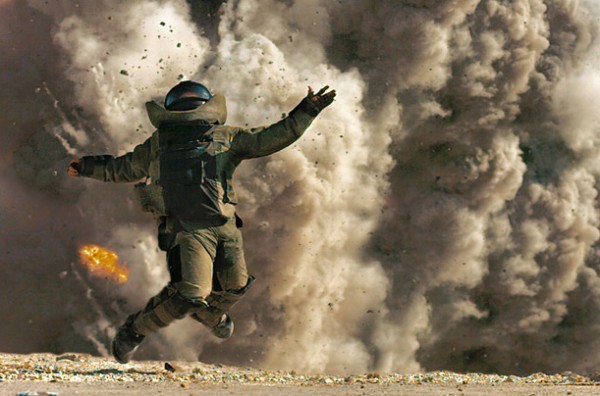
These days, war is swell — at least for the Motion Picture Academy members who choose the Oscar nominees. Of the 10 films on the not-so-short list for Best Picture, two prime contenders, The Hurt Locker and Inglourious Basterds, find their grittiest kicks in the spectacle of men at war: the suicidal heroism they display trying to defuse a Baghdad bomb, the patriotic sadism some American Jewish soldiers show as they scalp men in the Army of the Third Reich. You could say that Avatar is not just a war movie but a call to insurgency against the U.S. military; the long final act of James Cameron’s epic prods audiences to cheer for the bloody victory of Pandorans over American mercenaries. The South African sci-fi adventure District 9 takes the side of illegal aliens — grotty extraterrestrials, that is — against the white humans who have herded them into camps.
1. Napoléon (1927, Abel Gance) — the Napoleonic wars
For the most powerful military figure in French history, filmmaker Abel Gance conceived the grandest of all silent-movie dreams: six features chronicling Napoléon’s extraordinary life. He ran out of money and sponsors after just one film, but it’s a beaut, whose restored versions run between 4 and 5½ hrs. Beginning with a snow fight involving the child Bonaparte (war by softer means), embracing his love for Josephine and his irresistible rise through the tumult of the French Revolution, and reaching its climax with the victorious Italian Campaign, Gance’s biopic is as heroic and driven as its subject. The writer-director-producer used wildly swinging cameras to mime the milling chaos of revolutionary life and death, and for the final battle scenes, he sprayed the action across three screens — Cinerama and CinemaScope a quarter-century before their time. Over the years, Napoléon was recut, mutilated and all but lost; film historian Kevin Brownlow devoted decades to reviving it at its original epic length and scope. Francis Ford Coppola showed one version in 1980, with a new score by his father Carmine, and Napoléon triumphed again. That it is not available on DVD in the U.S. is a crime against cinema genius.

2. The Birth of a Nation (1915, D.W. Griffith) — U.S. Civil War
So many superlatives for one picture: the first great feature film, the movie that established the Confederacy as the collective hero of any Civil War film, the biggest box-office hit before Gone With the Wind — and, in its demeaning depiction of American blacks, a racist screed of appalling ignorance and influence. (The film, originally titled The Clansman, helped spur the rebirth of the Ku Klux Klan and led to a horrid spike in lynchings.) Put this asterisk next to Griffith’s tainted masterpiece: it was the first great war film. Inventing the epic genre’s visual vocabulary on the fly, he filled the screen with great, brutal battles, intercutting the galloping charges of the two armies for thrilling impact. The Birth of a Nation instructed generations of ambitious directors on the rules for splashing history onto celluloid. Griffith’s achievement can be no more easily forgotten than his racial insensitivity can be forgiven.
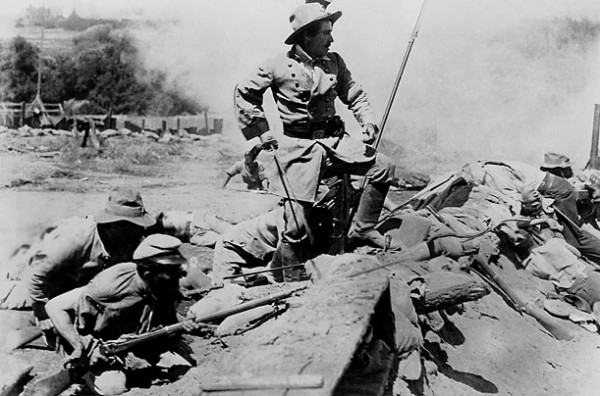
3. All Quiet on the Western Front (1930, Lewis Milestone) — World War I
The aura of nobility — of collegiality among enemies, of jaunty salutes from one aerial ace to his rival on the other side — suffused many of the memorable films about the Great War. Recall the courtly relationship between a German officer and his French prisoners in Jean Renoir’s La grande illusion. In the more realistic, or bitter, movies, the “war to end all wars” simply taught its survivors how to kill millions of young men more effectively the next time. Erich Maria Remarque’s famed novel, filmed by Lewis Milestone, follows a group of young Germans who are seduced by their teacher into enlisting for the patriotism and glamour. Instantly they learn that the hell of war is paved with wretched ambiguities. The main character, Paul (Lew Ayres), shoots a French soldier, then tries desperately, weepingly, to save the man’s life. Paul’s will end — in one of the signature final shots in movie history — as his hand reaches outside a trench to capture a butterfly. Only the butterfly lives.
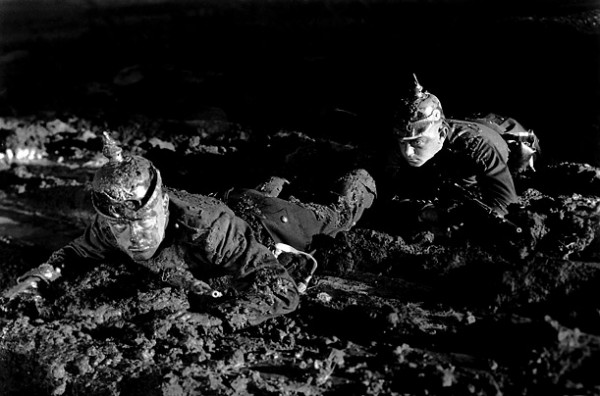
4. Paths of Glory (1957, Stanley Kubrick) — World War I
Thirty years before his half-brilliant Vietnam film Full Metal Jacket, the 28-year-old Kubrick made this most merciless and clinical of antiwar war movies. It details a suicide mission concocted by the ruthless French General Broulard (Adolphe Menjou): his soldiers must storm a German “anthill” with little hope of taking it and all their lives in jeopardy. When the botched plan fails, enlisted men must pay for the general’s blunders. Three are chosen at random and condemned to death, with a principled colonel (Kirk Douglas) as their only advocate. As commanding officers move troops across a battlefield like toys that can be replaced when they break, so Dax and Broulard debate the fate of the doomed soldiers. Working from Humphrey Cobb’s 1935 novel and a screenplay by two other novelists (sensitive Calder Willingham and hard-boiled Jim Thompson), Kubrick sends his camera tracking briskly through the trenches during the ramp-up to battle, then confines the viewer in closeups with the three condemned men — most notably the weeping, groveling Private Ferod, played by the Method madman Timothy Carey. In the equally insane rules of war, the men must prove their worth by dying for a general’s arrogant stupidity. The road to the firing squad is their path of glory.
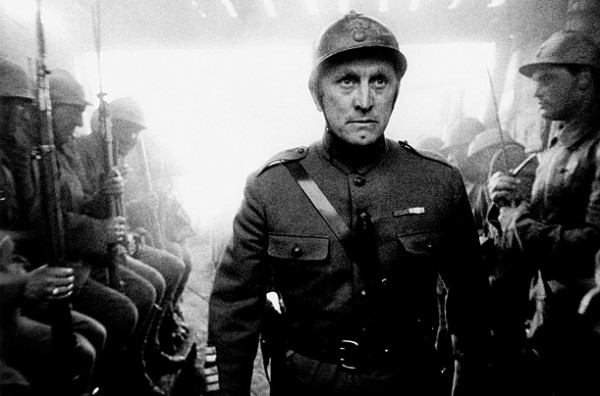
5. Das Boot (1981, Wolfgang Peterson) — World War II
Some war movies are admirable for dressing WW II clichés in a new uniform. Das Boot takes another plunge into the black pool of memory and finds — surprise! — flinty nobility. Actually, no surprise for anyone who feasted on the submarine movies of the 1950s. Here is the dogged captain (Jurgen Prochnow), navigating the straits of political bureaucracy and a bungling high command. Here is the wild-eyed wraith of the engine room (Erwin Leder), who “cracks” during one crisis, then performs heroically in the next. Here are the hide-and-seek battles, the claustrophobic tensions, the respect for a valiant enemy. The novelty here is getting the inside German view. Das Boot has thrills aplenty; it moves full speed ahead through its 2½-hr. running time. Of the 40,000 U-boat men in World War II, 28,000 were killed, and the film is careful to emphasize the fatal futility of all this derring-do. Still, the movie holds a lesson for American audiences raised on movies about the beastly Germans. It shows that some of the bad guys were good guys too.
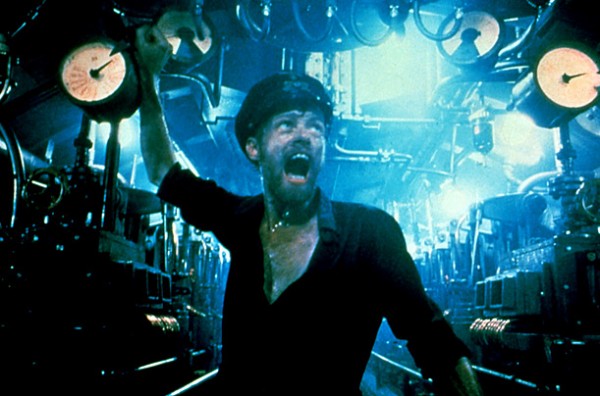
6. Saving Private Ryan (1998, Steven Spielberg) — World War II
From Richard Schickel’s TIME review: “The D-Day landing on Omaha: seasick soldiers massacred the minute the ramps on their landing boats are lowered; other men clambering over the sides trying to avoid the fire, only to drown under the weight of their packs; the surf turning red with the blood of the slaughtered; some who make it to the narrow beach huddling immobilized yet pathetically vulnerable behind what little cover they can find … It makes no difference. Whether you live or die here is entirely a matter of chance, not survival tactics. Spielberg’s handheld cameras thrust us into this maelstrom, and his superb editing creates from these bits and pieces a mosaic of terror. We see as the soldiers see, from belly level, in flashes and fragments, none more vivid than the shot, rendered almost casually, of a soldier staggering along, carrying his severed arm — the struggle against mortality encapsulated in what amounts to a sidelong glance. It is quite possibly the greatest combat sequence ever made, in part because it is so fanatically detailed, in part because the action is so compressed — all that panic in such a tight spot — in part because the horror is so long sustained, for more than 20 relentless minutes.”
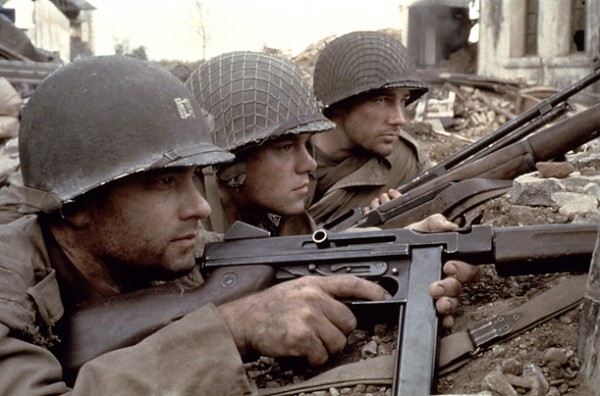
7. The Steel Helmet (1951, Samuel Fuller) — Korean conflict
The forgotten American stalemate, which was to U.S. foreign adventures what Pluto is to planets, the Korean conflict didn’t even get the respect of being called a war; officially, it was a United Nations “police action.” Yet more American soldiers went MIA in that 2½-year siege than in the 3½ years of World War II. Sam Fuller, a WW II veteran who later apotheosized his own regiment in 1980’s The Big Red One, made this first-ever Korean War film on the cheap: in 10 days, shooting in Los Angeles’ Griffith Park, using 25 extras whom he choreographed to look like swarming hundreds. Peppering his script with wisecracks about identifying the enemy (“He’s South Korean when he’s running with you. He’s North Korean when he’s running after you”) and bitter jokes about a late officer (“He’s fertilizing a rice paddy with the rest of the patrol”), Fuller took official flak for a scene in which a U.S. officer kills an unarmed prisoner; he was denounced as a communist and investigated by the FBI. That’s a heavy price to pay for a $100,000 movie with million-dollar battle scenes and a cynical worldview that’s … priceless.
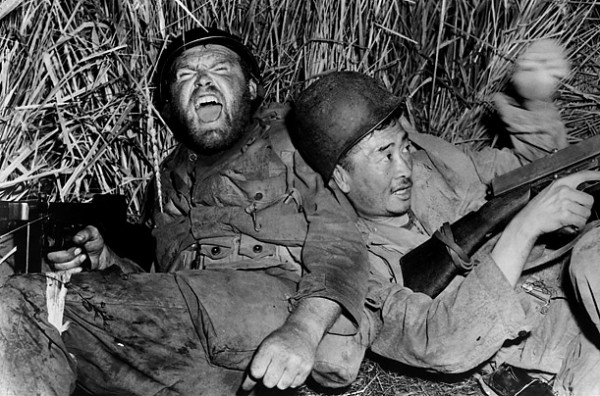
8. The Battle of Algiers (1966, Gillo Pontecorvo) — French-Algerian war
An occupying army will always be outnumbered by a civilian population. When the locals decide that subjugation is a death sentence and that freedom’s just another word for nothing left to lose, they can make enough mischief to drive the colonials out. This faux-doc report of the 1954-57 Algerian resistance by the National Liberation Front, and the popular insurgency it stoked against the occupying French, had the revelatory force of a cinematic IED when it opened during America’s Vietnam turmoil. Made by an Italian team but produced by FLN leader Saadi Yacef (and based on his prison autobiography), the film borrows its panoramic narrative and churning style from an earlier reconstruction of an urban uprising, Nanny Loy’s 1962 Four Days of Naples. A canny propagandist, Pontecorvo knew what Hollywood knew: to win an audience�s sympathy for an underclass people, make them beautiful. The Battle of Algiers wins the battle of ideas with Algerian faces that are artfully sculpted and wide, imploring eyes meant to haunt the viewer. The movie certainly left its mark on generations of American officials. Carter adviser Zbigniew Brzezinski called it a must-see for policymakers, and in the summer of 2003, as the Iraq insurgency started exploding, the Pentagon’s special-ops office held a screening of the film. Those in attendance apparently didn’t take its message to heart, and the Bush Administration found that the occupation of Baghdad was a much longer, costlier, deadlier battle of Algiers.
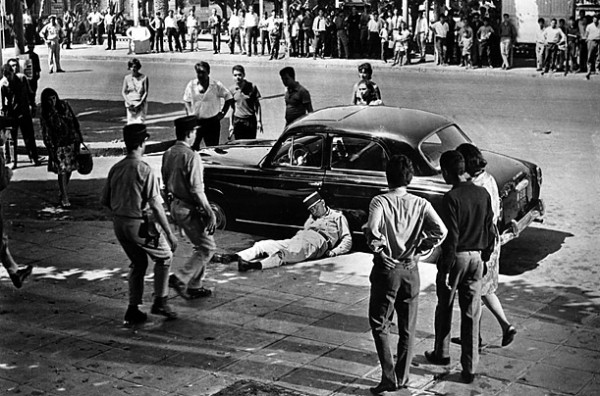
9. Apocalypse Now (1979, Francis Ford Coppola) — Vietnam
The 1970s were the decade of ornery, realistic movies, when filmmakers dared to address topics like government conspiracies, racial animosity and big cities’ fetid decay. Odd, then, that no American in the ’70s made a movie about the war in Vietnam until after it ended. (M*A*S*H doesn’t count; it was set in Korea.) Coppola, fresh off his two Godfather epics and The Conversation, decided to film a John Milius script roughly based on Joseph Conrad’s Heart of Darkness, about an Army captain (Martin Sheen) cruising through hostile territory into the lair of mad Colonel Kurtz (Marlon Brando at his most grotesque and gnomic). On location in the Philippines, the crew endured every possible calamity, from monsoons to the leading man’s heart attack. (Sheen recovered.) Presenting an unfinished cut of the film at Cannes, Coppola said he had endured his own private Vietnam. Not that any movie is worth such sacrifice, but Apocalypse Now nailed the madness of Americans lost in a jungle of misguided motives and foreign-policy screwups. Turning Norman Mailer’s question, “Why are we in Vietnam?,” into psychodrama, the film says that only the deranged survive — like Robert Duvall’s macho surfer, proclaiming, “I love the smell of napalm in the morning … It smelled like … victory.”
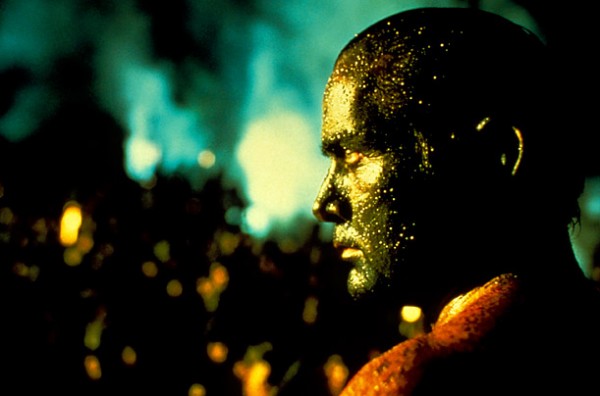
10. Black Hawk Down (2001, Ridley Scott) — Somalian mission
Most war movies use battle scenes the way musicals use production numbers: several are sprinkled throughout the picture to stir the viewer’s pulse. Not so with Black Hawk Down. After a brief introduction of the main characters, the picture is all fighting, all the time. It’s a 2-hour-plus gunfight at the O.K. Corral, except that the weapons are blazing on the streets of Mogadishu, where all lives are expendable. (President Clinton quickly ended the mission, which was more or less humanitarian.) Scott was criticized for focusing on the white Americans, for turning the Africans into an indistinguishable blur of grenade fodder and for allowing the implication that the deaths of 18 U.S. soldiers held greater import than the 300,000 Somalians who died at the regime’s hand before the military arrived. But if you want to feel the heat and stink of war, to know how desperation kindles gallantry and barbarism, see Black Hawk Down.
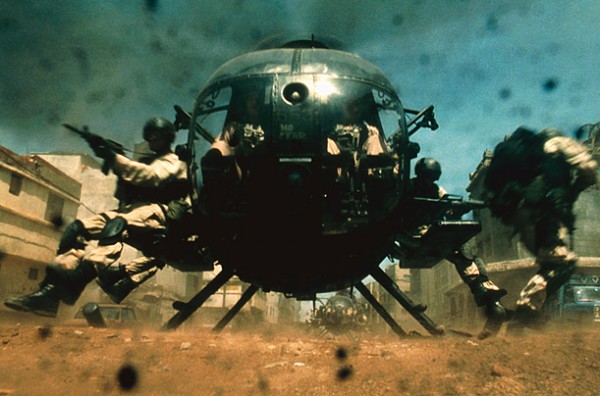
source: http://thewondrous.com/top-10-war-movies-of-all-time/


















1. “Are you sure about that?”
2. “May I share my view on that?”
3. “Is it possible that there is another approach/solution/source here?”
4. “That’s generally true, but I wonder if it is true in this situation.”
5. “Tell me your thinking on that approach/conclusion, will you?”
6. “Are you thinking that doing that will get you what you really want?”
7. “I wonder if we have all the facts/data on that, yet.”
8. “How can I most help you, right now?”
9. “When/where did you decide that is/was true?”
10. “Hmm. That’s very interesting. Will you educate me on that and why you see it that way?”
source: http://topten.org/top-ten/the-top-10-ways-to-correct-someone-gracefully/
Inspiration for song lyrics can come from an infinite number of places, but sometimes the ambiguity of their meaning is the best part. Here are 10 well known songs that fans have misinterpreted over the years. Of course there are many more (and perhaps some with better stories), but these songs were chosen simply because of their widespread popularity.
Misconception: A song about drugs
As evidenced in the movie Dangerous Minds, this song has widely been speculated to be an ode to mind-altering drugs, with Mr. Tambourine Man supposedly representing Dylan’s drug dealer. The song’s abstract, surrealistic imagery has fueled the idea that LSD was responsible for some of the lyrics, although Dylan claims to have been introduced to the drug after the song had been written. Dylan insists the song was never about drugs, but rather the search for inspiration. He claims the title character of Mr. Tambourine Man was actually inspired by musician Bruce Langhorne, who played a large Turkish tambourine during many of Dylan’s previous recording sessions.
Misconception: Autobiographical band story
In the summer of 1969, Bryan Adams was 10 years old. That should be enough to quell the idea that this song had anything to do with 1969 being the year he learned guitar, played in a band, and fell in love, yet the rumors persist. The upbeat nostalgia of this song wasn’t inspired by an actual year, but rather Mr. Adams’ fondness for a certain sexual position. According to Adams, the lyrics detailing a fondly remembered musical summer were mostly filler, because the song was actually about “making love in the summertime.”
Misconception: Describes singer’s struggle with AIDS
Queen’s classic was once rumored to reference Freddie Mercury’s battle with AIDS. The fatalistic lyrics about a man who has killed someone and his subsequent judgment supposedly chronicle Mercury’s feelings about his illness and impending death. The members of Queen have been intentionally vague over the years about the true meaning of the lyrics, but Mercury had been quoted as saying the words were simply “random rhyming nonsense” that were just written to fit the music. Furthermore, the AIDS epidemics of the early 80s took place years after this song had been completed.
Misconception: Sweet love song
Arguably the Police’s most popular song, Every Breath You Take has been played during countless weddings and on request lines due to the widely held belief that it is a gentle love song. According to Sting, the song is about love, but it’s quite a bit more “sinister and ugly” than people think. Sting wrote the song during the collapse of his marriage, amidst feelings of jealousy and obsession over his lost lover. He claims the stalker-like vibe of the lyrics were inspired by the desire for surveillance and control he was feeling during his divorce.
Misconception: Sexy love song
This lighthearted tune has solidified itself as a classic love song about longing for that special someone. Matthews’ soft and sincere delivery seem to distract some listeners from the lyrics that are actually kind of creepy. Matthews has admitted it is, indeed, a love song, but one that has been written from the perspective of a peeping tom. On close inspection, the song is definitely a celebration of women, albeit from a voyeuristic point of view, with the narrator at one point literally standing outside of a woman’s window watching her. Matthews has jokingly stated this song was written as an alternative to getting arrested.
Misconception: Song about devil worship
The ominous and abstract nature of Hotel California’s lyrics have led to numerous interpretations through the years. One view that was widely held during the 80s was that the song referred to a hotel purchased by Anton LaVey, the founder of the Church of Satan. The spooky imagery in the album cover art along with lyrics like, “they just can’t kill the beast” contributed to this myth. Don Henley and Glenn Frey have stated the song is really metaphorically describing excess in America and the Los Angeles high life that the band experienced.
Misconception: Patriotic song
Most people won’t be surprised to hear that despite many people (including politicians) having used the song for patriotic uses, the lyrics are actually extremely critical of the US. Many fist-pumping beer-drinking Americans, myself included, would proudly sing the chorus at ball games without giving a second thought to the lyrics contained in the verses. The song was written in response to the negative impact the Vietnam war had on Americans, but the catchy patriotic refrain is apparently just too… well, catchy. Similarly, the Australian band Men at Work’s song Down Under has been widely considered a patriotic song, while the authors maintain it was meant to be critical of their country.
Misconception: Song is about a suicide
Legend has it that Tom Petty wrote this song about a University of Florida student that commited suicide by jumping from her dorm room balcony. Petty is from Gainesville where UF is located, and Highway 441 (mentioned in the lyrics) does pass by the school, lending credibility to the story. However, Petty himself has insisted that this story is an urban legend, and the lyrics were actually inspired by the sounds of the freeway near his apartment in Encino, California, several years after he’d moved away from Florida.
Misconception: Witnessed a preventable death
The dark, accusatory lyrics of this song lent themselves to one of the most well known incorrect meanings. The story says that Phil Collins saw someone drowning once from far away, and that a third person, who was close enough to help, either ignored or refused to help the drowning person. Appalled by this, Collins penned this tune as an anonymous condemnation of the person’s cowardice and/or apathy. Some versions of the story have Collins finding this person at one of his shows and even singing it directly to them. Of course Collins says that story is incorrect, and the lyrics actually arose from the bitterness and anger he felt while going through his divorce.
Misconception: Girlfriend died in plane crash
The sad refrain and apocalyptic lyrics of one of James Taylor’s most famous songs gave rise to a belief that the song dealt with him losing his girlfriend, “Suzanne”, in a plane crash after friends bought her a ticket, trying to surprise Taylor with a visit while he was out of town. If interpreted in this manner, the line “sweet dreams and flying machines in pieces on the ground” supposedly references the crash. According to Taylor, however, the song was written over time, with each of the three verses dealing with a different aspect of his life: from the death of a friend, to his frustration in music, to his brief time spent in an institution. The lyric mentioned above actually referred to a band of Taylor’s that had failed, which left him deeply depressed. The name of that band was The Flying Machine.
Misconception: song is about LSD
John Lennon claimed this song was inspired by a drawing made by his son, and that he had no idea that the first letters of the words “Lucy,” “Sky,” and “Diamonds” were a reference to LSD. The lyrics certainly sound like some sort of drug-induced hallucination, but Lennon insisted that was never his intention.
source: http://feedproxy.google.com/~r/TheListUniverse/~3/KVaEw80WBLQ/
We’re all familiar with controversy over movies, television and books, but interactive media can have a similarly profound effect on people. Games have always been influential, and the darker side of the spectrum is something I’ve tried to explore in creating this list. In part, this list counts down from the controversial, yet popular, to the controversial and extremely unpopular. I have left out traditionally controversial games (with the acceptance of number 12) such a Grand Theft Auto, because these are simply widely regarded as some of the best games ever made, and only controversial because of their use of violence, sex and occasionally racism. There are plenty of games out there that have been made with a sole purpose of inciting racism, or exploiting crimes and sexism, murder, and rape. Note: This list contains content that may be disturbing.

Manhunt is a third-person stealth horror game, released in 2003. A sequel, Manhunt 2, was released four years later. Since 2003, the games have stirred incredible amounts of controversy, as well as gaining large success for the creators, Rockstar. The games center around your character being forced to kill numerous different people (called “hunters”), over several different levels (or “scenes”); with the gruesomeness of your kills affecting your ‘rating’ at the end of the scene. Each kill is shown during a short cut scene, in which your character murders the victim with the weapon selected. These weapons include hammers, knives, carrier bags, crow bars, chainsaws, guns, cheese wire and others. The kills can vary in their grittiness, which is down to player to choose as he approaches the victim.
The game’s apparent glamorization of violence gives it the feel of a snuff film, with the glorification of vigilantism and voyeurism. The game was linked to the 2004 murder, in Britain, of Stefan Pakeerah, who was killed by his best friend in a method similar to those in the game (with a claw hammer). The killer, Warren LeBlanc, had been found to be an obsessive player of the game, which his mother admitted in court after he had pleaded guilty. After this case, it was taken off the shelves in UK stores such as GAME and Dixons, as well as being banned in several countries. Despite its controversies, it is still a successful franchise.

Left Behind: Eternal Forces is a real-time strategy game, released in 2006 for Windows. It is based on the ‘Left Behind’ series of Christian novels and features the ‘Tribulation Force’ – a Christian group whom the player fights for in New York, as they combat Global Warming and a world government run by an Anti Christ. The game can be likened to other strategy games such as Age of Empires, or Command and Conquer. However, in Left Behind, the Christian mass fight various enemies using their faith as you try to convert everyone in order to be saved. Conversion is encouraged first; however lethal force is authorized when necessary. This provided the basis for the negative reception the game got, with it being accused of inciting a “convert or kill” message. It was branded as a “violent Christian video game” that promoted “Religious bigotry, intolerance and warfare”. The Anti Defamation League – a Jewish organization defended the makers of the game by stating “Conversion to Christianity in the game is not depicted as forcible in nature, and violence is not rewarded.”

This game was released in 1982 on the Atari 2600 by a company called Mystique; the same company who also released number 9 on this list in the same year. The company later went out of business during the video game crash of 1983. The idea of the game is to control 2 nude women, who move back and forth across the bottom of a building, catching semen from a man on top of the building constantly masturbating. Catching semen gives you points and you gain an extra life for every 69 points you get. Another, gender-reversed version of the game was released later, called “Philly Flasher”. In this game, you play 2 nude men who move across a building catching breast milk from a witch (you read that right). Upon catching all the milk, the men masturbate and ejaculate. Although it was unbelievably risqué as well as becoming rated as one of the worst games of all time, it became infamous.

Among the three sex games that were released by Mystique on the Atari 2600, Custer’s Revenge is perhaps the most notorious. It was the center of an $11 million dollar lawsuit, as well as numerous protests from Native American groups, woman’s rights activists, and critics of the video game industry in general. It is widely regarded as one of the worst games of all time, in both appearance (with the characters looking like Lego blocks), and gameplay. The idea of the game is control General Custer as he moves across the screen bearing a large erection, avoiding arrows, in order to make it to a nude Native American woman tied to a post, and then rape her.

The game Battle Raper, (as well as number 6 on this list), were made by a Japanese games company called ‘Illusion’. Illusion are famous for developing 3D ‘eroge’ games; a game genre and portmanteau of Erotic Game, (erochikku gēmu). Games in this genre feature anime-style eroticism and are usually either visual novels or romance simulators. There are numerous games released under this pretense, some are harmless such as girlfriend simulators, whilst others include voyeurism, rape and molestation. Battle Raper is, as the name suggests, a fight game (which has been likened to Tekken 2), with moves involving molestation and humiliation, as well as taking off your opponent’s health, along with the usual punches and kicks. The winner of a match can then rape the loser how he/she wants, with rape cut scenes being unlocked at the end of the game.

This game was released for download in 2004 by Scottish company ‘Traffic Games’, the release date coinciding with the 41st anniversary of the assassination of John F. Kennedy, in 1963. The game puts you in the position of Kennedy’s assassin, Lee Harvey Oswald, as he attempts to assassinate Kennedy. The playability of the game comes from a points system, where you must try and accurately recreate the actual bullet path of the assassination, and the events described in the Warren Commission report. It has been argued that JFK Reloaded isn’t so much a game, as a historical simulation. Either way, the company ran a competition in 2005 to see who could get the highest score and get closest to a 100% accurate simulation of JFK’s death. A man from France won $10,000 with a score of 782 out of 1000. A spokesman for Edward Kennedy, John Kennedy’s brother, has been quoted as calling the game, “…despicable. Why would someone make this game? This should have never been allowed on the market.”

RapeLay is another Japanese 3D ‘Eroge’ video game, released for PC in 2006. It follows the story of a man who stalks and rapes a mother and two daughters, with the player, of course, helping him do this. The game is a sexual simulator with mouse clicks and scrolls allowing clothing to be removed and molestation to occur. Many different game modes are available, ranging from stalking the girls and watching wind blow up their skirts, to having full sexual intercourse with all three females at once. The game even features an “internal ejaculation” counter which can result in pregnancy, or ‘game over’. Obviously the game received a negative reaction from every critic that reviewed it with some even claiming to be “horrified” at the game content, and saying that games like RapeLay are the reason tighter laws must be applied to control game content. On the other hand, some people defending the game have argued that rape is considered a less-serious crime than murder, and that the majority of games out now feature the murder of numerous people in order to finish the game.

The idea behind ‘SCMRPG!’ was to, in part, parody video games and their supposed role in the 1999 Columbine shootings, as well as represent a critique on how media sensationalized the shootings. The opinions of this game differ greatly. Some believe it to be a sordid trivialization of an unjust crime and the impact it had on numerous victims. Others find the game’s cartoon graphics and side plot into the shooter’s perdition in hell, original and worthy of praise. Either way, the game puts the player in control of Eric Harris and Dylan Klebold in a 16-bit recreated high school. The majority of the game is carried out with an overhead view of your character as you move around, collecting weapons and experiencing flashbacks of the shooter’s lives including things that may have inspired them to carry out the shooting. “Battles” are fought with various people around the school, in a way similar to early Pokemon battles on the Game Boy games, with digital photos of the actual high school and sound clips in the background. In these battles, weapons can be chosen and used to take the “enemies” health.
It was created by Danny Ledonne in 2005, during which 10,000 downloads were made (in the first year). The game didn’t gain much media attention until 2006, after which downloads increased dramatically with 30,000 in the first half of May, 2006. By March, 2007, the game had been downloaded over 400,000 times. Most of the media coverage, as expected, was negative and was seen as a game that ‘glamorized murder’ and was an ‘example of a game that worships terrorism’. The small amount of positive feedback that the game got was due to the acceptance of Ledonne’s message. A survivor of the shootings even said, “It probably sounds a bit odd for someone like me to say, but I appreciate the fact at least to some degree that something like this was made”.

‘Baby Shaker’ was an iPhone application that had to be seen to be believed. As with most iPhone apps, the phone can be shaken and moved to control the action on screen. In this primitive “game” however, you were presented with a cartoon picture of a baby and had to shake the iPhone to stop them crying. When you had shaken them enough, red crosses appeared over their eyes, signifying the fact they had died. The game caused huge upset with the public and two parents, whose babies were victims of being shaken, protested outside an Apple store and subsequently, the application has been taken off the iPhone store as of 2009.

Full title: Muslim Massacre: The Game of Modern Religious Genocide. This game was made by a forum member under the name of “Sigvatr” in 2008. It is a top-down shoot ‘em up video game with the protagonist being an American hero parachuted into the Middle East with the aim of killing as many Muslims as possible. There are numerous weapons including pistols, a shotgun, a machine gun, grenades and rocket launchers, with some enemies being civilians (which you must also kill) and some being suicide bombers than can do damage to you. Each stage lasts around a minute with bosses being Osama Bin Laden, Mohammed and Allah. Game companies tried to ignore the controversial nature and branded it “boring and tedious”, while many Muslim groups branded it “unacceptable, tasteless, and deeply offensive” claiming it encourages young people to kill Muslims. Two days after a September 11th anniversary, the game was taken down and an apology issued, due to large amounts of negative comments. However, the apology was found to be fake and the game is still in circulation. An article in the LA times printed a comment by ‘anon’ stating, “If it were a game showing Muslims killing Israelis, the whole world would have sought revenge”.

The premise of this game is to control either a skin-headed white supremacist or a member of the KKK, moving through the ghetto, shooting and killing any black and Latino people you find. You then descend into the subway and kill Jewish people, before finding a Jewish Control Center, and killing the former Prime Minister of Israel, Ariel Sharon. I found out about this game by watching a Louis Theroux documentary on white supremacists, and being shocked by this game being the only game a mother allowed her two young daughters to play and them both claiming to enjoy it. The game was released in 2002 by an underground record label specializing in Neo-Nazi and white supremacist music, called Resistance Records. The game has been protested over, and the game engine that was used to create it, Genesis3D, has even been encouraged to change their licensing to prohibit the creation of racist games. The game’s description is as follows: “The Race War has begun. Your skin is your uniform in this battle for the survival of your kind. The White Race depends on you to secure its existence. Your peoples enemies surround you in a sea of decay and filth that they have brought to your once clean and White nation. Not one of their numbers shall be spared….”

Numerous versions of KZ manager have been made since 1990 on the Commodore 64, Amiga, MS DOS and on Windows. The game is a text-based, resource management game which simulates the construction and running of a Nazi Concentration Camp. Many other management sims are hugely successful, such as the Sim City series, but instead of resources like water, electricity and food to manage, KZ Manager has the player manage the prisoners (Jews, Gypsies or Turks – your choice), poison gas and money, as well as monitoring public opinion and the camp productivity. Money can be made by forcing the prisoners to work, with public opinion being raised with regular killing of these prisoners. More prisoners can be bought, with the corpses of those you have killed being put on a garbage pile. Most versions of KZ Manager are in German, which is strange considering the modern day German regulations against the uses of Nazi symbols and practices. KZ Manager is freeware, and the latest Windows version, called “KZ Manager Millennium” is available through the internet.
source: http://feedproxy.google.com/~r/TheListUniverse/~3/3jk1-fRQtJU/